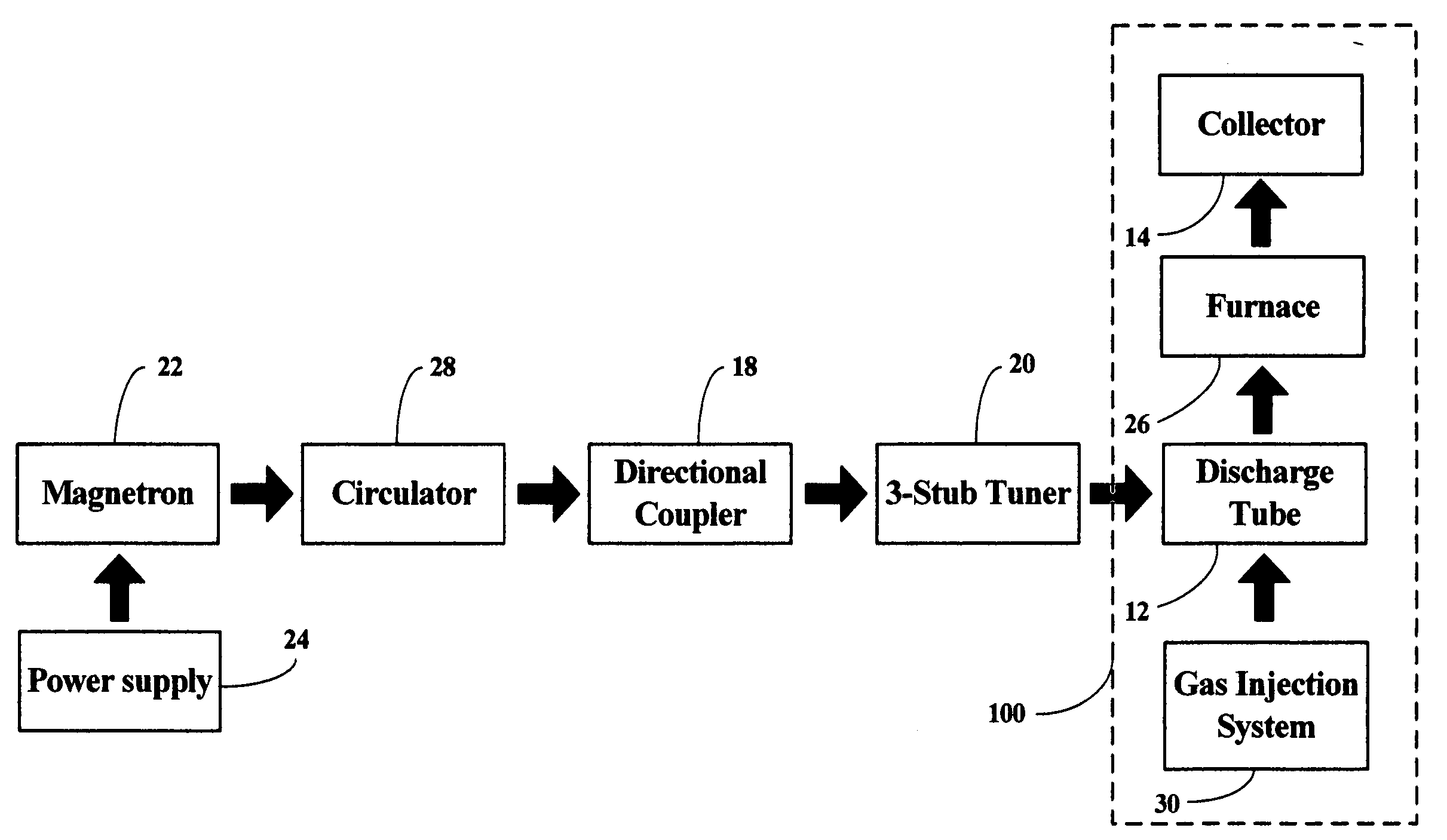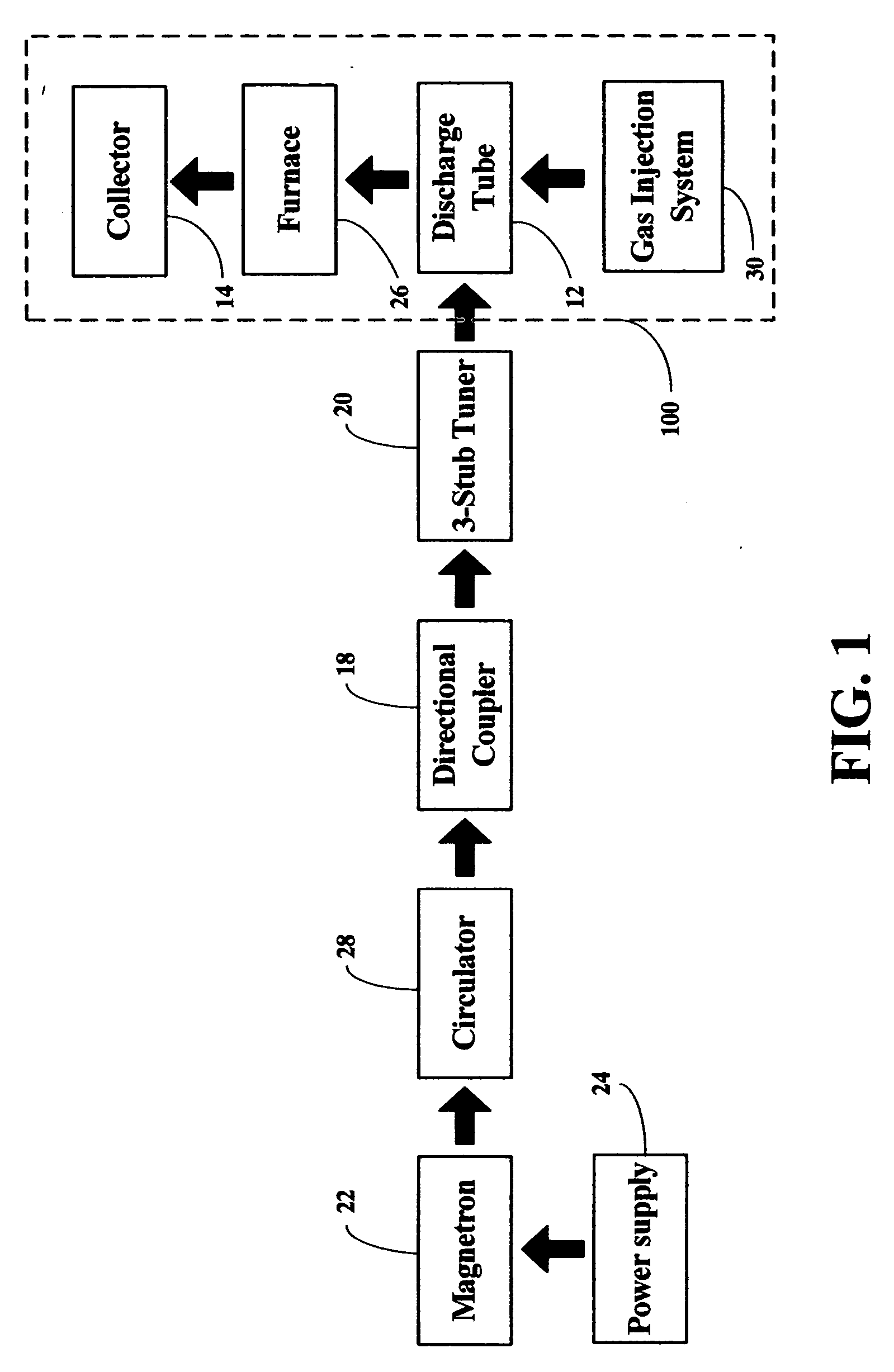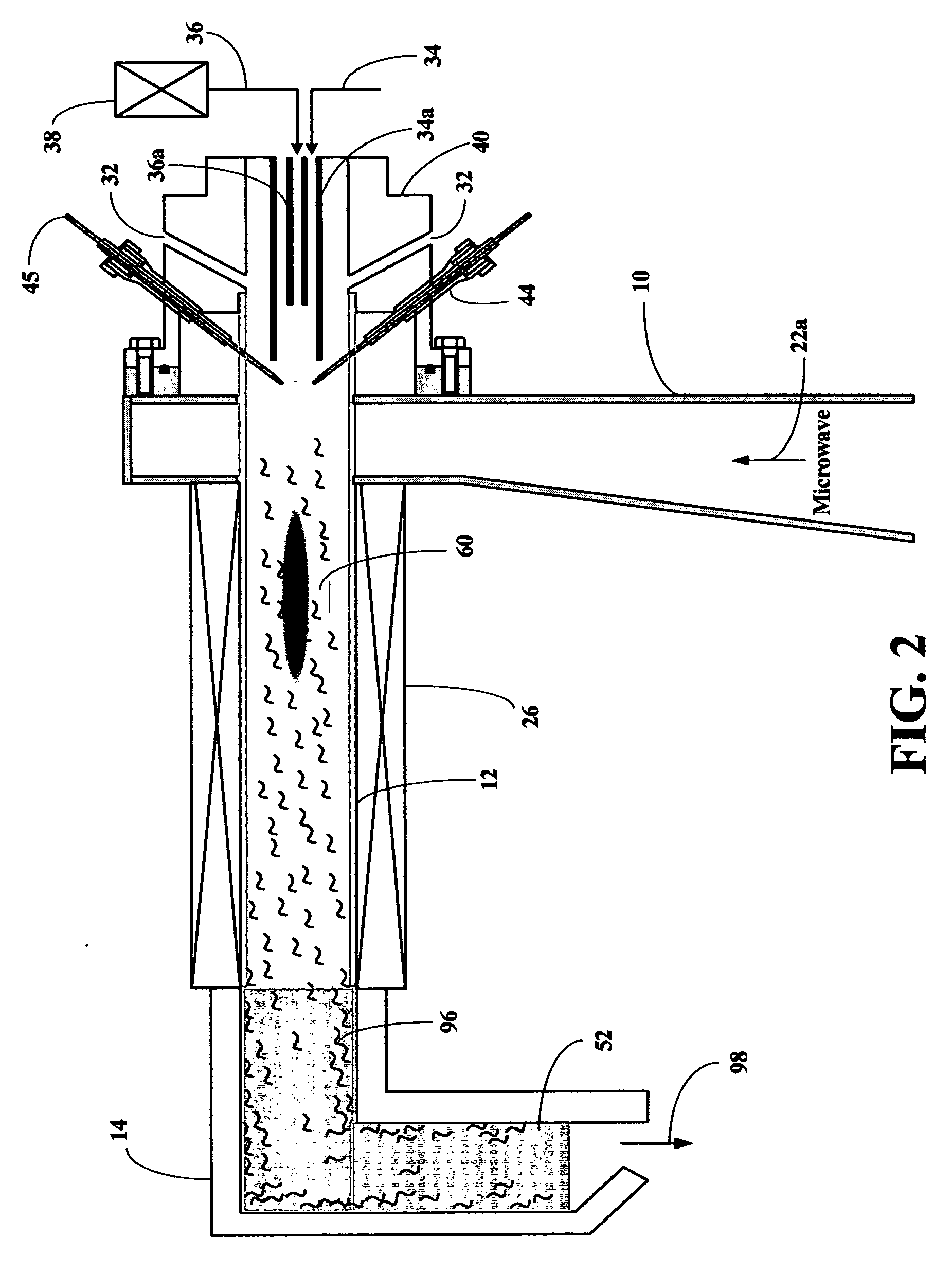Synthesis of carbon nanotubes by making use of microwave plasma torch
a technology of microwave plasma and carbon nanotubes, which is applied in the field of microwave plasma apparatus and a method for synthesis of carbon nanotubes using the microwave plasma torch, can solve the problems of low yield, low overall energy efficiency, and low product purity, and achieve the effect of enhancing the electric field strength of microwave radiation
- Summary
- Abstract
- Description
- Claims
- Application Information
AI Technical Summary
Benefits of technology
Problems solved by technology
Method used
Image
Examples
example 1
[0033] The apparatus used is shown in FIG. 2. Carbon nanotubes with the average diameter less than 80 nm and the average length of 1.5 micrometer were produced using argon as the swirl or diluent gas, acetylene as the carbon-containing gas, and iron pentacarbonyl as the transition metal precursor, which was carried by argon gas. The swirl gas flow rate was 15 liters per minute (lpm), that of acetylene was 100 standard cubic centimeters per minute (sccm), and that of the catalyst carrier gas was 50 sccm. Then the microwave forward power was 1.6 kW. The discharge tube of 30 mm diameter was used and the furnace length was 55 cm. The collector system and the furnace was maintained at 25° C. and 650˜700° C., respectively.
example 2
[0034] The apparatus used is shown in FIG. 2. Carbon nanotubes with the average diameter less than 100 nm and the average length of 1 micrometer were produced using argon as the swirl or diluent gas, hexane as the carbon-containing gas, and iron pentacarbonyl as the transition metal precursor, which was carried by hexane gas. The swirl gas flow rate was 5 lpm and that of hexane was 1000 sccm. Then the microwave forward power was 1.2 kW. The discharge tube of 26 mm diameter was used and the furnace length was 55 cm. The collector system and the furnace was maintained at 25° C. and 650˜700 ° C., respectively.
example 3
[0035] The apparatus used is shown in FIG. 2. Carbon nanotubes with the average diameter less than 100 nm and the average length of 1.5 micrometer were produced using nitrogen as the swirl or diluent gas, acetylene as the carbon-containing gas, and iron pentacarbonyl as the transition metal precursor, which was carried by argon gas. The swirl gas flow rate was 10 lpm and that of acetylene was 100 sccm, and that of the catalyst carrier gas was 50 sccm. Then the microwave forward power was 1.6 kW. The discharge tube of 30 mm diameter was used and the furnace length was 55 cm. The collector system and the furnace was maintained at 25° C. and 750˜800° C., respectively.
PUM
 Login to View More
Login to View More Abstract
Description
Claims
Application Information
 Login to View More
Login to View More - R&D
- Intellectual Property
- Life Sciences
- Materials
- Tech Scout
- Unparalleled Data Quality
- Higher Quality Content
- 60% Fewer Hallucinations
Browse by: Latest US Patents, China's latest patents, Technical Efficacy Thesaurus, Application Domain, Technology Topic, Popular Technical Reports.
© 2025 PatSnap. All rights reserved.Legal|Privacy policy|Modern Slavery Act Transparency Statement|Sitemap|About US| Contact US: help@patsnap.com



